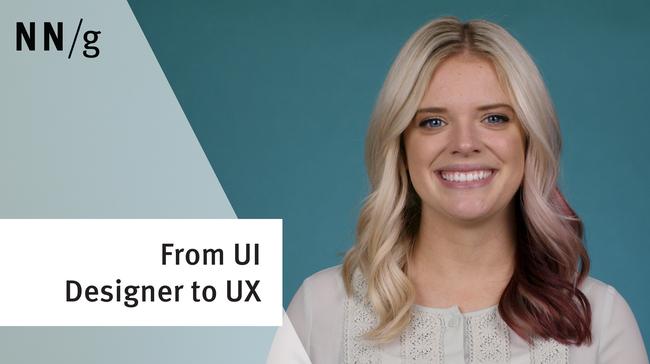To reach the goal of making technology truly suited for humans, the world will need about half a million new usability professionals over the next 20 years. The sooner their training begins, the better off we'll all be.
People frequently ask me what it takes to become a usability professional and get a job in the field. The answer lies in three characteristics that all great usability professionals share:
- Knowledge of interaction theory and user-research methodologies, especially the principles of user testing
- High brain power
- 10 years' experience running user tests and other usability activities, such as field studies
Unfortunately, only the first of these characteristics can be taught (yes, we offer UX training). Usability expertise is mainly an issue of talent and experience rather than theory. Much of usability work requires pattern matching, which is why it's so dependent on brain power and past experience: Once you observe slight traces of a usability issue in users' behavior, you must deduce the underlying implications for design.
A bad usability specialist will report, "User 1 liked this, but User 2 did not." Not much help for the design team. A good usability specialist combines the observations across multiple users, distills the patterns, and arrives at a conceptual insight that can drive the design.
This is not to say that theory is irrelevant. After all, I've written several books on usability myself, and I believe in transferring experience: There is no reason for you to make the same mistakes I made twenty years ago. If you want to enter the user experience field, it's certainly a good idea to read some basic UX books first.
In addition to the basic theory, there are also many practical tips and tricks for user testing that have evolved over the years. If you run a study with bad methodology, you won't learn much. Every methodological insight makes your own studies a little better, and leveraging others people's experience offers a great return on investment
Learn by Doing
It's a bit circular, but to really learn about usability you have to run usability studies. Reaching usability nirvana requires many years' experience observing diverse users in varying contexts:
- Study a wide range of people: the young and old, utter novices, experts, Unix geeks, sales staff, physicians, repair technicians, administrative assistants, executives, users of different nationalities.
- Watch those people perform a wide range of tasks: shopping, searching, planning vacations, researching school projects, managing an erupting oil well.
- Observe them using a wide range of interface designs and styles. Ideally, the interfaces should feature different ways of solving the same design problem so that you can compare and contrast how different design details affect usability.
- Experiment with a wide range of interaction platforms, from wall-sized "virtual windows" to pocket-sized PDAs. It can also help to watch people use text-only designs like a mainframe or classic Unix, or futuristic technologies like VR that might be currently useless, but can serve as a source of ideas.
Note the frequent use of the term "wide range" in this list. Breadth of experience is the foundation that lets you confidently say things like, "Users typically have problems when faced with this kind of situation, but here are some alternative designs that often work." There is no single answer in usability. The more you've seen, the better equipped you are to handle new situations.
Getting Started
There are only two barriers to running a usability study:
- the fear that you can't do it, and
- the desire for perfection.
The first barrier is hogwash. Of course you can do it. As you set out, try to avoid the classic mistake of novice usability engineers: interfering with users and thus biasing how they use the interface. Keep quiet and let the user do the talking.
The second barrier is quite real. Your first study will not be perfect. But if you wait until you are perfect, you will never get anything done, because the only way to get really good at usability is to do it.
I recommend that you start with a small project that's easy to manage. Ideally, you should know the project designers and developers well, or perhaps be the primary designer or developer yourself. Usability testing is such a powerful method that even if you mess it up, you'll get useful results that will significantly improve the design. Still, it's better to mess up on a small project than a big one.
After a few rounds of testing and design improvements on this project, two things will happen:
- You will become better at usability.
- Management will notice big quality improvements in the tested designs.
That's when it's time to move to a bigger, high-profile project. If you work on an intranet, pick something that all employees use frequently. Making a widely used tool easier to use will not only increase productivity (and thus make the company lots of money), but it will also evangelize usability to all the design and development people — who, after all, will be using the improved tool themselves.
Learning the basics of usability testing isn't difficult. We teach it in a day. What is hard is getting all the subtleties right and achieving deep conceptual understanding. It takes about ten years to build up the sufficiently big mental database of previous observations required to be a truly great usability professional. People with a few years' experience perform reasonably well, but the first year or so, some insights will escape you. Still, you must go through this first year, and the sooner you start running your own tests, the sooner you'll become a master.





Share this article: